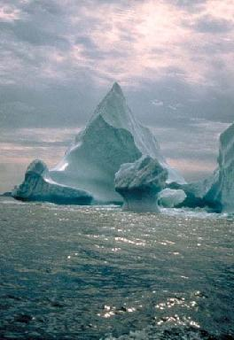NOAA/WDS Paleoclimatology - Clemens and Prell 2003 Arabian Sea Summer Monsoon Proxy Data
This archived Paleoclimatology Study is available from the NOAA National Centers for Environmental Information (NCEI), under the World Data Service (WDS) for Paleoclimatology. The associated NCEI study type is Paleoceanography. The data include parameters of paleoceanography with a geographic location of Indian Ocean. The time period coverage is from 347400 to 6000 in calendar years before present (BP). See metadata information for parameter and study location details. Please cite this study when using the data.
Dataset Citation
- Cite as: Clemens, S.C.; Prell, W.L.; Murray, D.W.; Altabet, M.A.; Shimmield, G.B. (2003-10-17): NOAA/WDS Paleoclimatology - Clemens and Prell 2003 Arabian Sea Summer Monsoon Proxy Data. [indicate subset used]. NOAA National Centers for Environmental Information. https://doi.org/10.25921/rmmh-ss98. Accessed [date].
- Please refer to Credit tab for full citation information.
Dataset Identifiers
- doi:10.25921/rmmh-ss98
- noaa-ocean-5882
- NCEI DSI 1200_02
- NCEI DSI 1200_01
ISO 19115-2 Metadata
noaa-ocean-5882
| Search Data |
|
| Download Data |
|
| Distribution Formats |
|
| Ordering Instructions | Contact NCEI for other distribution options and instructions. |
| Distributor |
NOAA National Centers for Environmental Information ncei.info@noaa.gov |
| Dataset Point of Contact |
NOAA National Centers for Environmental Information ncei.info@noaa.gov |
| Dataset Point of Contact | Data Center Contact NOAA World Data Service for Paleoclimatology 828-271-4800 paleo@noaa.gov |
| Coverage Description | Date Range: 347400 cal yr BP to 6000 cal yr BP; |
| Time Period | -345450 to -4050 |
| Spatial Bounding Box Coordinates |
West: 59.796
East: 59.861667
South: 16.621833
North: 16.625
|
| Spatial Coverage Map |
| General Documentation |
|
| Associated Resources |
|
| Publication Dates |
|
| Data Presentation Form | Digital table - digital representation of facts or figures systematically displayed, especially in columns |
| Dataset Progress Status | Complete - production of the data has been completed |
| Data Update Frequency | Data update frequency not available |
| Supplemental Information | ABSTRACT SUPPLIED BY ORIGINATOR: Five summer-monsoon proxies from the Northern Arabian Sea are combined using stacking and principal components analysis (PCA) to create two very similar multi-proxy records of summer-monsoon variability. The five individual proxies all respond to monsoon variability but are largely independent in terms of the processes that complicate their interpretation as summer-monsoon indicators (e.g. preservation, dissolution, diagenesis, sediment reworking). As such, stacking and PCA average out non-monsoon variance, yielding a more pure monsoon signal. These stacked and PCA records (hereafter summer-monsoon stack and summer-monsoon factor) allow evaluation of relative monsoon strength through time as well as the relative concentration of variance within orbital bands; these two parameters are less reliable when estimated from individual proxy records. In fact, the summer-monsoon factor (SMF) accounts for only 33% of the total variance in the five records, suggesting that relative amplitude variations in each individual proxy time series are influenced by non-monsoon processes. The summer-monsoon stack (SMS) and SMF are spectrally very similar, dominated by variance in the 41-k.y. (obliquity) and 23-k.y. (precession) bands; there is very little variance at the 100-k.y. (eccentricity) band associated with large-scale changes in global ice-volume. Indeed, equally strong monsoons occur in both glacial and interglacial intervals. Within the 23-k.y. precession cycle, monsoon maxima fall at −121° relative to precession minima (June 21 perihelion, maximum Northern Hemisphere (NH) summer insolation). This phase falls midway between δ18O minima (−78°) and December 21 perihelion (−180°) indicating that two mechanisms exert equal influence in determining the timing of strong summer monsoons within the precession band: (1) sensible heating of the Asian Plateau which is maximized at times of ice-volume minima (−78°), and (2) latent heat export from the southern subtropical Indian Ocean which is maximized at times of December 21 perihelion (−180°). The seasonal cycle at December 21 perihelion is characterized by warm Southern Hemisphere (SH) summers followed by cold SH winters, a combination that preconditions the ocean to export latent heat during the boreal summer-monsoon season. Summer-monsoon winds transport this latent heat into Asia where it is released during precipitation, enhancing the Asian monsoon low. Within the 41-k.y. obliquity cycle, monsoon maxima are in phase with obliquity maxima. This indicates that two mechanisms, quite similar to those in the precession band, influence the timing of strong summer-monsoons in the obliquity band: (1) sensible heating of the Asian Plateau but with no ice-volume delay, and (2) latent heat export from the southern subtropical Indian Ocean which is maximized at times of obliquity maxima. Again, the seasonal cycle at obliquity maximum is characterized by warm SH summers followed by cold SH winters, ideal for maximizing latent heat export during the boreal summer monsoon. |
| Purpose | Records of past climate and ocean circulation derived from marine sediments. Parameter keywords describe what was measured in this dataset. Additional summary information can be found in the abstracts of papers listed in the dataset citations. |
| Dataset Citation |
|
| Cited Authors |
|
| Originators |
|
| Publishers |
|
| Theme keywords |
Global Change Master Directory (GCMD) Science Keywords
|
| Data Center keywords |
Global Change Master Directory (GCMD) Data Center Keywords
|
| Place keywords |
|
| Use Constraints |
|
| Access Constraints |
|
| Fees |
|
Last Modified: 2024-01-25
For questions about the information on this page, please email: ncei.info@noaa.gov
For questions about the information on this page, please email: ncei.info@noaa.gov

